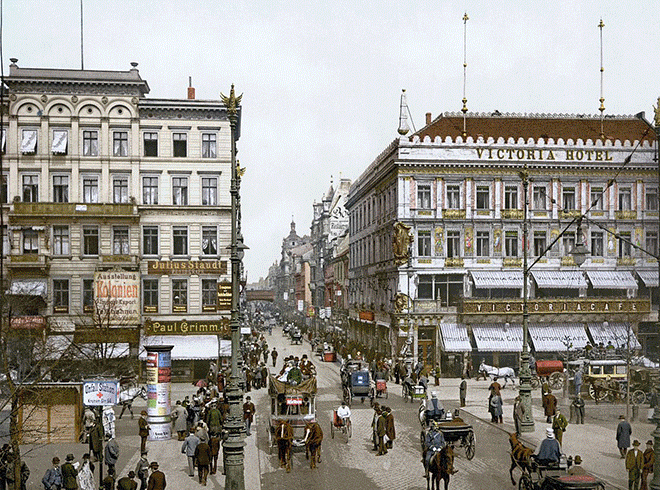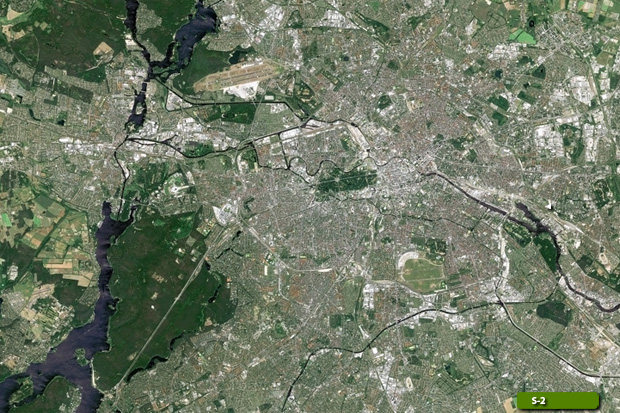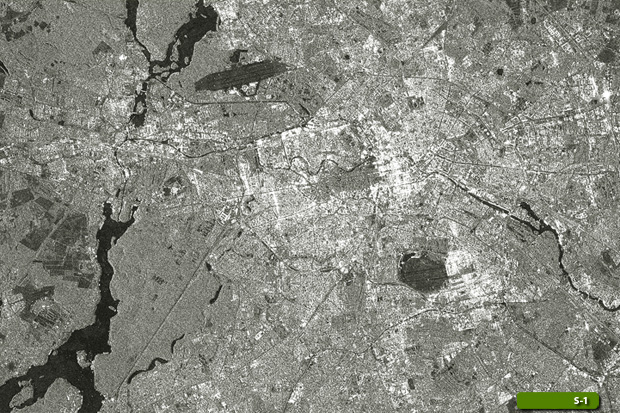|
Berlin, Germany
Berlin is the capital and the largest city of Germany, as well as one of its 16 constituent states. With a steadily growing population of approximately 3.7 million, Berlin is the second most populous city proper in the European Union behind London and the seventh most populous urban area in the European Union. Located in northeastern Germany on the banks of the rivers Spree and Havel, it is the centre of the Berlin-Brandenburg Metropolitan Region, which has roughly 6 million residents. Due to its location in the European Plain, Berlin is influenced by a temperate seasonal climate. Around one-third of the city's area is composed of forests, parks, gardens, rivers, canals and lakes. First documented in the 13th century and situated at the crossing of two important historic trade routes, Berlin became the capital of the Margraviate of Brandenburg (1417–1701), the Kingdom of Prussia (1701–1918), the German Empire (1871–1918), the Weimar Republic (1919–1933) and the Third Reich (1933–1945). Berlin in the 1920s was the third largest municipality in the world. Following German reunification in 1990, Berlin once again became the capital of all of Germany. Berlin is a world city of culture, politics, media and science. Its economy is based on high-tech firms and the service sector, encompassing a diverse range of creative industries, research facilities, media corporations and convention venues. Berlin serves as a continental hub for air and rail traffic and has a highly complex public transportation network. The metropolis is a popular tourist destination. Significant industries also include IT, pharmaceuticals, biomedical engineering, clean tech, biotechnology, construction and electronics. Berlin is home to world-renowned universities, orchestras, museums, and entertainment venues, and is host to many sporting events. Its Zoological Garden is the most visited zoo in Europe. With the world's oldest large-scale movie studio complex, Berlin is an increasingly popular location for international film productions. The city is well known for its festivals, diverse architecture, nightlife, contemporary arts and a very high quality of living. Since the 2000s Berlin has seen the emergence of a cosmopolitan entrepreneurial scene. More information is available on: Wikipedia

Berlin was badly damaged during the Second World War and afterwards was partitioned into East Berlin and West Berlin. The divided city not only symbolised the collapse of the German Empire, but also became a focus of Cold War tensions between the Communist Nations led by the Union of Soviet Socialist Republics (USSR), and the group of Western nations led by the United States. The Berlin Wall was constructed by East Germans in 1961, blocking free access in both directions and separated the two sides of the city until November 1989. Approximately 100 people died in attempts to cross from East to West Berlin. By the time Germany was unified in October 1990, most of the wall had been torn down. Only a few small segments remain as memorials. With this comparison of images taken by the Sentinel-2 (optical) and Sentinel-1 (SAR) satellites, we aim to show the field of application of the Copernicus Sentinel satellite family.   View Sentinel 2 high resolution image (JPG 5.6 MB) View Sentinel 1 high resolution image (JPG 6.0 MB)
|
|||||||||||||||||||

